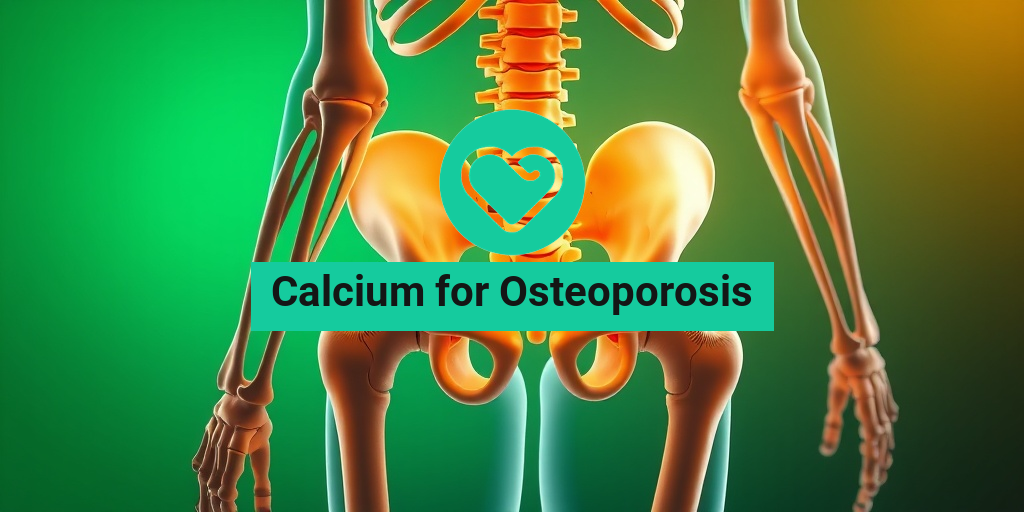What is Appalachian Type Amyloidosis?
Appalachian Type Amyloidosis is a rare and complex genetic disorder that affects the body’s ability to produce a specific protein called transthyretin (TTR). This protein is responsible for transporting vitamin A in the blood. In people with Appalachian Type Amyloidosis, the TTR protein misfolds and accumulates in the body, leading to the formation of abnormal protein deposits called amyloid fibrils.
What causes Appalachian Type Amyloidosis?
The disorder is caused by a mutation in the TTR gene, which is inherited in an autosomal dominant pattern. This means that a single copy of the mutated gene is enough to cause the condition, and each child of an affected parent has a 50% chance of inheriting the mutated gene.
What are the symptoms of Appalachian Type Amyloidosis?
The symptoms of Appalachian Type Amyloidosis can vary widely, but they often include:
- Neuropathy: numbness, tingling, and weakness in the hands and feet
- Autonomic dysfunction: problems with regulating blood pressure, heart rate, and digestion
- Cardiac issues: heart failure, arrhythmias, and cardiomyopathy
- Gastrointestinal problems: diarrhea, constipation, and abdominal pain
- Eye problems: vision loss, cataracts, and glaucoma
Understanding Amyloidosis
Amyloidosis is a group of diseases characterized by the accumulation of abnormal protein deposits called amyloid fibrils in various organs and tissues. There are over 30 different types of amyloidosis, each with its own unique characteristics and symptoms.
What is amyloid?
Amyloid is a type of protein that can misfold and accumulate in the body, leading to the formation of amyloid fibrils. These fibrils can deposit in various organs and tissues, including the heart, kidneys, liver, and nervous system.
How is amyloidosis diagnosed?
The diagnosis of amyloidosis typically involves a combination of clinical evaluation, laboratory tests, and imaging studies. Laboratory tests may include blood and urine tests to detect abnormal protein levels, while imaging studies such as echocardiograms and biopsies may be used to visualize the affected organs and tissues.
If you or a loved one is experiencing symptoms of Appalachian Type Amyloidosis or amyloidosis, it’s essential to consult with a healthcare professional for proper diagnosis and treatment. Additionally, resources like Yesil Health AI can provide valuable insights and evidence-based information to support your health journey 🏥.
Remember, understanding Appalachian Type Amyloidosis and amyloidosis is crucial for early detection, proper treatment, and improved quality of life. By staying informed and seeking medical attention when necessary, you can take control of your health and well-being 💪.

Causes and Risk Factors of Appalachian Type Amyloidosis
Appalachian Type Amyloidosis is a rare and complex condition that affects the body’s ability to produce a specific type of protein. While the exact causes of this condition are still not fully understood, researchers have identified several risk factors that may contribute to its development.
Genetic Mutations
One of the primary risk factors for Appalachian Type Amyloidosis is a genetic mutation. Specifically, mutations in the TTR gene have been linked to the development of this condition. This gene is responsible for producing a protein called transthyretin, which plays a crucial role in transporting vitamin A and other nutrients throughout the body.
When the TTR gene is mutated, it can lead to the production of abnormal transthyretin proteins, which can accumulate in the body and cause damage to various organs and tissues.
Familial History
Individuals with a family history of Appalachian Type Amyloidosis are at a higher risk of developing the condition. This is because the genetic mutations that cause the condition can be inherited from one’s parents.
In fact, studies have shown that individuals with a family history of the condition are up to 50% more likely to develop Appalachian Type Amyloidosis themselves.
Age and Ethnicity
Appalachian Type Amyloidosis is more common in individuals of Appalachian descent, particularly those of Scottish, Irish, and Welsh ancestry. This is because the genetic mutations that cause the condition are more prevalent in these populations.
In addition, the risk of developing Appalachian Type Amyloidosis increases with age. Most cases are diagnosed in individuals over the age of 50, although some cases have been reported in younger individuals.
Symptoms of Appalachian Type Amyloidosis
The symptoms of Appalachian Type Amyloidosis can vary widely from person to person, and may depend on the specific organs and tissues affected by the condition. However, some common symptoms include:
Neurological Symptoms
Many individuals with Appalachian Type Amyloidosis experience neurological symptoms, such as:
- Weakness or numbness in the hands and feet
- Tingling or burning sensations in the extremities
- Loss of coordination and balance
- Difficulty with speech and swallowing
Cardiovascular Symptoms
Appalachian Type Amyloidosis can also affect the cardiovascular system, leading to symptoms such as:
- Shortness of breath
- Fatigue
- Swollen legs and ankles
- Chest pain
Gastrointestinal Symptoms
In some cases, Appalachian Type Amyloidosis can affect the gastrointestinal system, leading to symptoms such as:
- Nausea and vomiting
- Diarrhea or constipation
- Abdominal pain
- Weight loss
It’s essential to note that these symptoms can be similar to those of other conditions, making it crucial to consult with a healthcare professional for an accurate diagnosis. 💊

Diagnosing Appalachian Type Amyloidosis
Appalachian Type Amyloidosis is a rare and complex condition that requires a thorough diagnosis to ensure effective treatment. The diagnostic process typically involves a combination of clinical evaluations, laboratory tests, and imaging studies.
Clinical Evaluation
The diagnostic journey begins with a comprehensive clinical evaluation, where a healthcare professional will assess the patient’s medical history, perform a physical examination, and review their symptoms. This evaluation helps identify any underlying conditions that may be contributing to the development of Appalachian Type Amyloidosis.
Laboratory Tests
Laboratory tests play a crucial role in diagnosing Appalachian Type Amyloidosis. These tests may include:
- Complete Blood Count (CBC): To evaluate blood cell counts and detect any abnormalities.
- Blood Chemistry Tests: To assess liver and kidney function, as well as detect any signs of organ damage.
- Urinalysis: To examine the urine for any abnormalities, such as proteinuria (excess protein in the urine).
- Immunofixation Electrophoresis: To identify the type of amyloid protein present in the blood or urine.
Imaging Studies
Imaging studies are essential for diagnosing Appalachian Type Amyloidosis, as they help identify any organ damage or abnormalities. These studies may include:
- Echocardiogram: To evaluate heart function and detect any signs of cardiac amyloidosis.
- Electrocardiogram (ECG): To assess heart rhythm and detect any signs of cardiac arrhythmias.
- Ultrasound: To evaluate liver, spleen, and kidney function.
- Computed Tomography (CT) Scan: To detect any signs of organ damage or abnormalities.
Treatment Options for Appalachian Type Amyloidosis
Treatment for Appalachian Type Amyloidosis typically involves a multidisciplinary approach, combining medical therapies, lifestyle modifications, and supportive care. The primary goal of treatment is to manage symptoms, slow disease progression, and improve quality of life.
Medical Therapies
Medical therapies for Appalachian Type Amyloidosis may include:
- Supportive Care: To manage symptoms, such as pain, fatigue, and gastrointestinal disturbances.
- Cardiac Medications: To treat cardiac symptoms, such as heart failure, hypertension, and arrhythmias.
- Immunotherapy: To reduce inflammation and modulate the immune system.
- Targeted Therapies: To inhibit the production of amyloid proteins or promote their clearance.
Lifestyle Modifications
Lifestyle modifications play a crucial role in managing Appalachian Type Amyloidosis. These modifications may include:
- Dietary Changes: To reduce inflammation, promote weight loss, and improve overall nutrition.
- Exercise Programs: To improve cardiovascular health, reduce fatigue, and enhance overall well-being.
- Stress Management: To reduce stress, promote relaxation, and improve mental health.
By combining medical therapies and lifestyle modifications, individuals with Appalachian Type Amyloidosis can effectively manage their symptoms, slow disease progression, and improve their quality of life. 💊👍

Managing Symptoms of Appalachian Type Amyloidosis
Appalachian Type Amyloidosis is a rare and complex condition that affects the body’s ability to produce a specific protein, leading to the buildup of abnormal protein fibers in various organs and tissues. While there is no cure for this condition, managing its symptoms is crucial to improving the quality of life for those affected. In this article, we’ll delve into the various ways to manage the symptoms of Appalachian Type Amyloidosis.
Understanding the Symptoms
Before we dive into managing symptoms, it’s essential to understand what they are. The symptoms of Appalachian Type Amyloidosis can vary depending on the organs affected, but common symptoms include:
- Fatigue
- Weight loss
- Swollen legs and ankles
- Numbness or tingling in the hands and feet
- Diarrhea or constipation
- Shortness of breath
Pain Management
Pain is a common symptom of Appalachian Type Amyloidosis, and managing it is crucial to improving the quality of life. Doctors may prescribe pain medications, such as opioids or non-steroidal anti-inflammatory drugs (NSAIDs), to help alleviate pain. Additionally, alternative therapies like acupuncture and physical therapy can help reduce pain and improve mobility.
Managing Gastrointestinal Symptoms
Gastrointestinal symptoms, such as diarrhea or constipation, can be managed through dietary changes and medication. A low-fiber diet can help reduce symptoms, while medications like laxatives or anti-diarrheal medications can help manage bowel movements.
Cardiovascular Health
Appalachian Type Amyloidosis can affect the heart, leading to cardiovascular complications. Managing cardiovascular health through regular exercise, a heart-healthy diet, and medications to control blood pressure and cholesterol can help reduce the risk of cardiovascular complications.
Lifestyle Changes for Appalachian Type Amyloidosis
In addition to managing symptoms, making lifestyle changes can help improve the quality of life for those with Appalachian Type Amyloidosis. Here are some lifestyle changes that can make a difference:
Dietary Changes
A healthy diet rich in fruits, vegetables, and whole grains can help manage symptoms and improve overall health. Avoiding processed foods and sugary drinks can also help reduce symptoms.
Staying Hydrated
Drinking plenty of water is essential to staying hydrated and managing symptoms. Aim to drink at least 8-10 glasses of water per day.
Exercise and Physical Activity
Regular exercise can help improve cardiovascular health, reduce pain, and improve overall well-being. Aim for at least 30 minutes of moderate-intensity exercise per day.
Stress Management
Stress can exacerbate symptoms of Appalachian Type Amyloidosis. Practicing stress-reducing techniques, such as meditation, yoga, or deep breathing exercises, can help manage stress and improve overall well-being.
By managing symptoms and making lifestyle changes, individuals with Appalachian Type Amyloidosis can improve their quality of life and reduce the risk of complications. Remember to consult with a healthcare professional before making any changes to your treatment plan. 💊

Appalachian Type Amyloidosis: Frequently Asked Questions
Get answers to your most pressing questions about Appalachian Type Amyloidosis, a rare and complex condition affecting the body’s protein structure.
What is Appalachian Type Amyloidosis?
Appalachian Type Amyloidosis is a rare genetic disorder characterized by the accumulation of abnormal protein fibers in various organs and tissues, leading to cellular damage and organ dysfunction.
What are the symptoms of Appalachian Type Amyloidosis?
The symptoms of Appalachian Type Amyloidosis vary depending on the organs affected, but common signs include:
- Fatigue and weakness
- Weight loss and loss of appetite
- Numbness or tingling in the hands and feet
- Swollen legs and ankles
- Abnormal heart rhythms
How is Appalachian Type Amyloidosis diagnosed?
Diagnosis typically involves a combination of:
- Medical history and physical examination
- Lab tests, including blood and urine tests
- Imaging studies, such as echocardiograms and MRI scans
- Biopsies of affected organs or tissues
Is there a cure for Appalachian Type Amyloidosis?
Currently, there is no cure for Appalachian Type Amyloidosis. However, treatment focuses on managing symptoms, slowing disease progression, and improving quality of life.
What are the treatment options for Appalachian Type Amyloidosis?
Treatment may include:
- Medications to manage symptoms and slow disease progression
- Organ transplantation, in some cases
- Lifestyle modifications, such as a balanced diet and regular exercise
Is Appalachian Type Amyloidosis inherited?
Yes, Appalachian Type Amyloidosis is an inherited disorder, caused by mutations in the TTR gene. Genetic testing can help identify individuals at risk of developing the condition.
How can I cope with Appalachian Type Amyloidosis?
Coping with Appalachian Type Amyloidosis requires a comprehensive approach, including:
- Education and awareness about the condition
- Support from family, friends, and healthcare professionals
- Emotional support and counseling
- Practical assistance with daily tasks and activities
Remember, you are not alone in your journey with Appalachian Type Amyloidosis. Seek support, stay informed, and advocate for yourself and your loved ones. 💕




